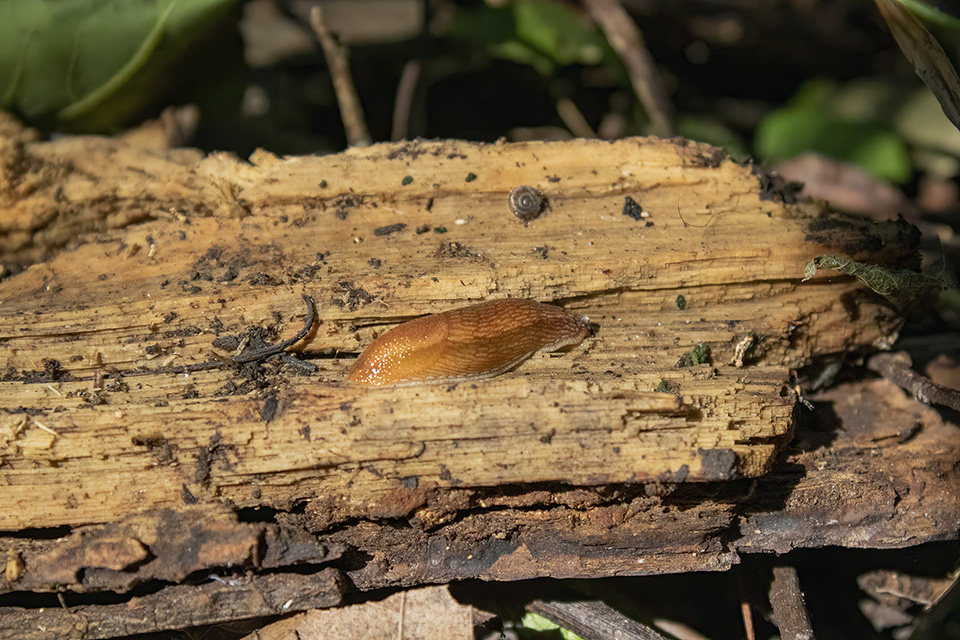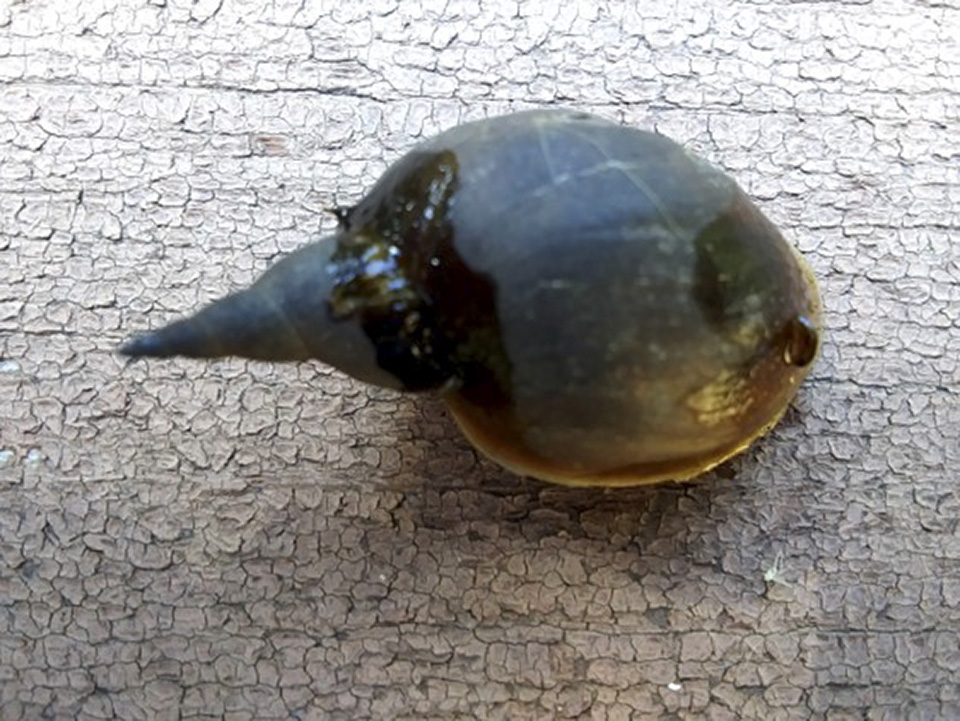
Dusky slug (Arion subfuscus/fuscus) is common, exotic, terrestrial slug. It is native to northern Europe and was introduced into North America in the vicinity of Boston in 1842. By 1940 it was widespread across North America. It is found in moist or wet areas in deciduous and coniferous woodlands, in meadows on rocks, and in old fields and waste places. It is often encountered in areas of human activity, including in roadsides, gardens, campgrounds, wood piles, and window wells. In natural areas it is sometimes more abundant than native snail and slug species. It can a pest of agricultural crops, forest replantings, and gardens.
Two species of dusky slug are often treated as a single species complex, a group of species so similar that the boundaries are unclear. Aside from their geographic distribution, the two species can only be distinguished by the size and color of the genitalia of dissected individuals, or by analysis of their alloenzymes. Both species have been introduced into North America.
Adults are long and slender when extended, short and bell-shaped when contracted. The body is covered with rows of pale bumps, giving it a finely granular appearance. It is variable in color, but populations generally fit into one of four color groups: blackish-brown, yellowish-brown, orange, and reddish-brown. The orange or yellowish-orange color is mostly – or completely – due to a covering of mucus. When handled, the mucus will stain the handler’s fingers. There is usually a brown stripe on each side.

